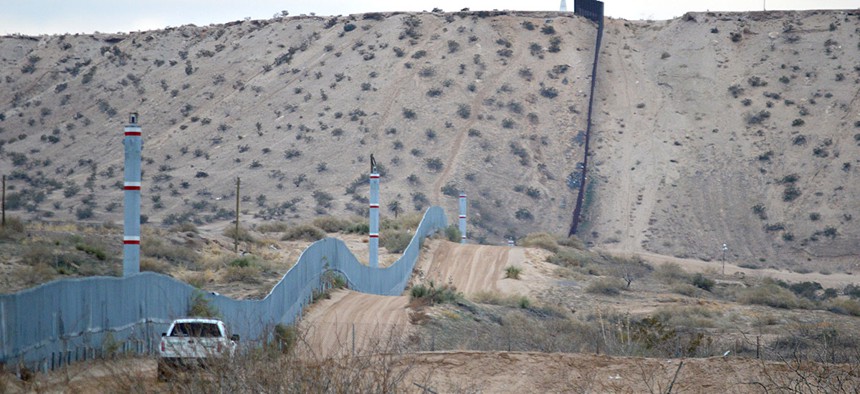Border Agency Ready to Expand Virtual Fence along Southern Border

A U.S. Border Patrol agent drives near the U.S.-Mexico border fence in Sunland Park, N.M. Russell Contreras/AP
New border technology has successfully completed operational testing after being assessed in the field for past several months.
U.S. Customs and Border Protection announced Tuesday it was ready to expand deployment of a series of sensor- and camera-equipped surveillance towers used to keep tabs on parts of the U.S.-Mexico border.
CBP said the “Integrated Fixed Tower Program” has successfully completed operational testing after being assessed in the field for past several months. A 2013 funding bill blocked CBP from expanding the program until the agency certified the new tech had been properly tested.
In a statement, Acting Chief of the U.S. Border Patrol Ronald Vitiello said the certification was based on a review of field-testing and agent feedback, which showed the technology “adds surveillance capability, increasing situational awareness and officer safety.”
The first set of towers were developed by Elbit Systems of America -- a subsidiary of Israel's largest publicly traded defense firm -- and cost $23 million. They were tested in Nogales, Arizona.
Each tower is outfitted with an array of sensors and other surveillance tools, including radar, electro-optical and infrared surveillance cameras to continuously scan and track the border. Officials say they plan to use the new tech to curb human trafficking, drug smuggling and other illegal activity.
CBP ultimately plans to install 50 of the surveillance towers along the Southern border at a cost of about $145 million.
The concept of a virtual fence stretches back some 10 years. The Department of Homeland Security canceled a $1 billion effort -- the Secure Border Initiative Network program, or SBINet -- in 2011, after the effort ran into major cost and schedule overruns and failed to work as envisioned.
The presidential election has thrust the issues of immigration and border security back into the political spotlight. The retooled virtual fence the administration is rolling out across the Southwest border, however, is vastly different than the giant wall GOP presidential frontrunner Donald Trump has championed.
Aliya Sternstein contributed to this report.





